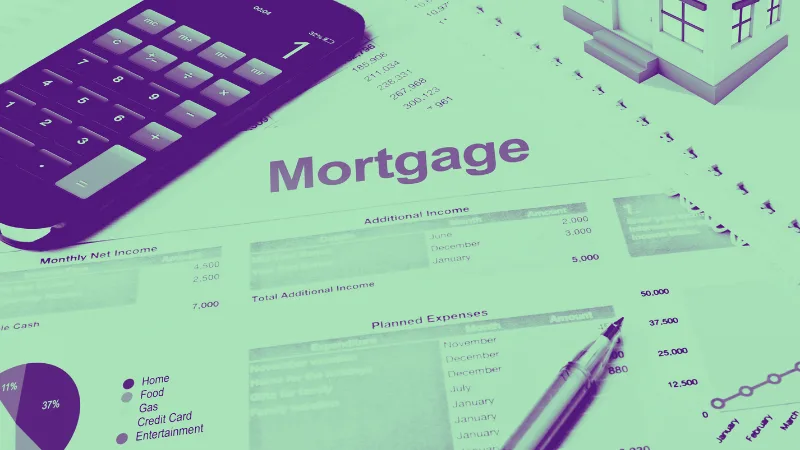In a surprising turn for homebuyers, mortgage rates took a significant dip following the Trump administration’s latest tariff announcement. While this may sound like welcome news, the reality on the ground is far more complex. Despite lower interest rates, housing affordability remains a major challenge for most Americans, with home prices still hovering near record highs.
Mortgage Rates Tumble to Lowest Level Since October
On Thursday, the average rate on a 30-year fixed mortgage dropped to 6.63%, falling 12 basis points in a single day, according to Mortgage News Daily. This marks the lowest level since October 2024 and signals a potentially pivotal moment in the housing market, just as the crucial spring buying season gains momentum.
The drop was fueled largely by a sharp sell-off in the stock market, as investors responded to renewed trade tensions. The Trump administration’s announcement of new tariffs sparked fears of a potential slowdown in global commerce, prompting investors to seek safety in U.S. Treasury bonds. This influx into the bond market pushed down yields on the 10-year Treasury note — a key benchmark for mortgage rates.
“While plenty of uncertainty remains over the finer points of Wednesday afternoon’s tariff announcement, markets have heard enough to brace for impact on global trade,” wrote Matthew Graham, chief operating officer at Mortgage News Daily.
Historically, mortgage rates tend to follow the movement of the 10-year Treasury yield, so when bond yields drop, mortgage rates often do too. This inverse relationship has offered a bit of breathing room for prospective buyers, but unfortunately, lower rates don’t always translate into affordability.
Home Prices Still Near Record Highs
Despite the decline in mortgage rates, the overall cost of buying a home remains historically high. According to Redfin, the typical U.S. homebuyer’s monthly mortgage payment hit $2,802 for the four weeks ending March 30 — the highest on record for the second week in a row.
Sale prices have climbed 3.4% year-over-year, and although mortgage rates are slightly down, they remain more than double what they were during the pandemic housing boom when sub-3% mortgage rates were common.
This combination of high prices and elevated rates continues to squeeze would-be buyers, especially those in middle- and lower-income brackets.
Most Americans Can’t Afford a Median-Priced Home
Perhaps the most sobering figure comes from the National Association of Home Builders (NAHB), which estimates that nearly 70% of U.S. households — roughly 94 million — cannot afford a $400,000 home. The median price of a newly built home in 2025 is approximately $460,000, making homeownership increasingly out of reach for the majority of Americans.
To put this into perspective, a household would need to earn at least $61,487 annually to afford a $200,000 home with a 6.5% mortgage rate — assuming standard underwriting criteria. Yet, around 52.87 million U.S. households fall below that income threshold, leaving them limited to even less expensive homes, which are increasingly rare in today’s market.
Inventory Is Rising — But Not Where It’s Needed
While there has been a modest uptick in housing inventory, it’s not enough — and it’s not in the right segment. Much of the new supply entering the market is priced well above what the average buyer can afford.
According to Realtor.com, new home listings in March rose 10% compared to the previous year, and active listings jumped a substantial 28% year-over-year. However, this new supply is not easing affordability concerns because it’s largely concentrated in mid- to high-priced homes, not in the entry-level market where demand is highest.
“Supply is picking up; a lot of people I’ve spoken to over the last year or two are calling, saying they’re ready to list their house,” said Matt Ferris, a Redfin agent based in northern Virginia. “Some believe we’re at the top of the market, and they want to get top dollar for their house. Here in the D.C. area, some people are selling because they’re worried about losing their government job, or because they want to buy closer to the city due to in-office policies.”
Market Softens in Sunbelt States
A closer look at regional data reveals that housing demand is cooling in several high-growth markets, especially in the Sunbelt. Cities like Jacksonville and Miami, Florida, saw pending home sales fall by 15.1% and 13.7%, respectively, in March. Virginia Beach experienced a 14.2% drop.
These areas benefited from a surge in demand during the pandemic as remote work allowed people to relocate to more affordable or desirable regions. But as remote work policies tighten and interest rates remain high, that trend is reversing. This “reverse migration” is softening demand and pushing some prices down, though not enough to significantly improve affordability.
Homes Sitting Longer, Price Cuts Increasing
Another indicator of a cooling market is the increase in days on market. According to Realtor.com, homes are taking longer to sell, and sellers are more frequently reducing their asking prices. This trend reflects growing buyer hesitation amid economic uncertainty, even as mortgage rates show signs of improvement.
Danielle Hale, chief economist at Realtor.com, commented on the evolving market dynamics: “The high cost of buying coupled with growing economic concerns suggest a sluggish response from buyers in early spring. We’re seeing a market that’s rebalancing, offering more choices for shoppers.”
Economic Uncertainty Still Weighs on Buyers
Despite the recent drop in rates, homebuyers remain cautious. Inflation has cooled from its 2022 peaks but remains a concern, and consumer confidence is still shaky. The Federal Reserve’s cautious stance on rate cuts — driven by a need to ensure inflation doesn’t resurface — means mortgage rates could remain volatile for the foreseeable future.
Moreover, wage growth has not kept pace with home price appreciation. While average hourly earnings rose 4.1% year-over-year in March, according to the Bureau of Labor Statistics, home prices have outpaced that growth in many metro areas.
Student debt, rising costs of living, and tightened credit conditions have also added to the financial pressures on households, especially younger buyers and first-time homeowners.
What Homebuyers Can Expect in the Coming Months
Looking ahead, the outlook for homebuyers is mixed. If mortgage rates continue to fall or stabilize around current levels, more buyers may be encouraged to re-enter the market. However, unless home prices moderate significantly or real incomes rise, affordability will continue to be a barrier.
Here are some potential scenarios:
- If tariffs expand and trade tensions persist, we could see more market volatility that keeps downward pressure on Treasury yields and, by extension, mortgage rates.
- If the Federal Reserve signals rate cuts, we may see sustained relief in mortgage rates — potentially falling below 6.5% by summer.
- If job losses increase or a recession looms, demand may fall sharply, forcing sellers to lower prices, especially in overvalued markets.
Tips for Prospective Homebuyers
For those still hoping to buy in 2025, consider these tips to navigate the current housing landscape:
- Shop for mortgage rates aggressively – Even small rate differences can significantly impact your monthly payment.
- Expand your location search – Look at emerging suburbs or smaller metro areas where prices may be lower.
- Watch for price reductions – Homes sitting on the market for 30+ days may be ripe for negotiation.
- Focus on total affordability, not just the rate – Consider property taxes, insurance, and HOA fees when calculating monthly costs.
- Get pre-approved – In a competitive market, being pre-approved makes you a stronger buyer.
Final Thoughts
The recent drop in mortgage rates is a positive sign for the housing market, but it’s far from a silver bullet. With home prices still high, inventory mismatched with demand, and economic uncertainty on the horizon, the path to homeownership remains steep for many Americans.
As the spring and summer homebuying seasons unfold, prospective buyers should stay informed, be patient, and remain flexible in their expectations. The housing market is in a period of transition — one that may offer opportunities for those who are prepared.






